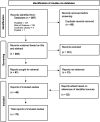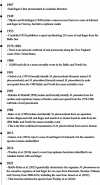Seal finger: a literature review
- PMID: 40692448
- PMCID: PMC12284992
- DOI: 10.1080/22423982.2025.2530267
Seal finger: a literature review
Abstract
Seal finger is a rare zoonotic bacterial infection typically caused by Mycoplasma species, transmitted from seals (Pinnipedia suborder) to humans. First documented in 1907, this disease remains under-researched despite growing relevance as humans increasingly encroach on Arctic regions. We conducted a review of multiple databases to evaluate its history, prevalence, at-risk populations, and treatment options. The infection primarily affects individuals who have close contact with marine mammals, including fishers, hunters, sealers, and marine biologists. Seal finger usually presents similarly to panaritium, with localized swelling, erythema, and pain. Due to its rarity and limited awareness among healthcare providers, the infection is often unrecognized, leading to wounds going untreated or being managed with inappropriate antibiotics. This mismanagement allows the infection to progress, potentially involving joints or spreading further, which could have been effectively prevented with a course of tetracycline. Further research is essential to better understand the epidemiology of seal finger and improve timely diagnosis. To reduce complications, more education is needed for physicians working in coastal, Arctic, and aquarium settings about recognizing the disease and administering proper treatment. Enhanced awareness and research can improve patient outcomes and increase the safety of human interactions with seals.
Keywords: Pinnepedia; infection; mycoplasma; seal finger; zoonosis.
Conflict of interest statement
No potential conflict of interest was reported by the author(s).
Figures
References
Publication types
MeSH terms
Substances
LinkOut - more resources
Full Text Sources
Medical


